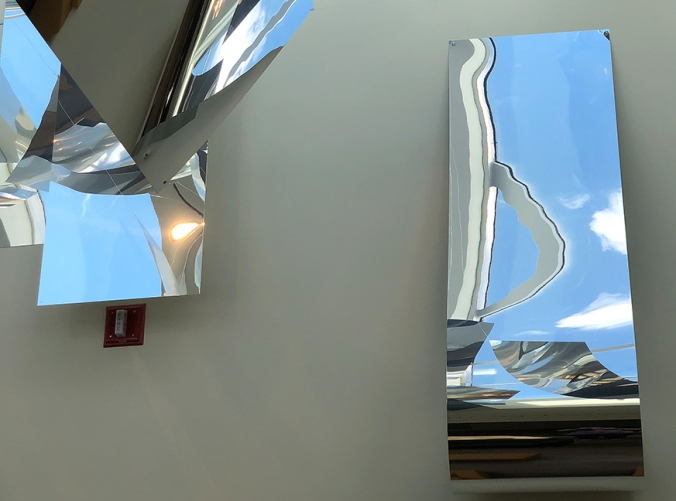No art lasts forever, but some art is much more transient than the rest.
A good friend of mine posted a link on my Facebook page tonight that shows photographs of a Van Gogh painting reproduced large on the landscape via vegetation planted on a 1.2-acre plot. The artist is Stan Herd, who specializes in “land art” designed to be seen from the air. Most of his pieces are eventually plowed under or grown over.
The same transience characterizes the work of the well-known artist Andy Goldsworthy, who works primarily with sticks and stones, leaves, ice, and other materials found in nature. Most of his works are not destined for long life either. They melt, get blown away, wither, or are destroyed by water. Even more transient than Goldsworthy’s or Herd’s works are patterns made by artists on sandy beaches or snowy slopes, some of which last only a few minutes before seawater washes them away or the sun melts their borders.
Some conceptual artists play on the notion of transience by doing conventional work but deliberately planning its destruction. And the very nature of performance art is transience. Only the photographs and videos documenting these various types of art have any longevity, although they too will die some day.
It’s supremely ironic that my friend happened to post this particular link this evening that led me to muse about the transience of art—because this evening, after years of uncertainty, I had finally brought myself to put some art into the recycling bin.
When my husband died, in May 2008, he left behind three big acid-free boxes stacked full with 200 to 300 abstract paintings and other artworks interleaved with acid-free sheets. Most of these works were done with undiluted watercolors on paper. Some were done with ink; some were done via photocopier. Many of the paintings are flaking; some are wrinkled. Some are quite good; many are not, partly because Steve never discarded any of his efforts and partly because his mother and I have skimmed off the cream of the crop. They epitomized Steve as much as anything did. They were the best things he ever produced. To whatever extent anyone has a legacy, they were his legacy. And even though we were divorced a few months before he died, they became unofficially mine upon his death.
At least, I took them. A friend helped me clear out the house that Steve and I once shared, which I’d deeded over to him in the divorce. But neither of us could pry open the high cupboards in the sunroom that I thought contained the boxes of paintings. In a near panic, I dragged in a neighbor who worked and worked and finally got the doors open. I wept in relief. Although I didn’t know what I would do with the paintings, they were the most alive thing left of Steve and they had to be saved.
But where does art go when it has no future?
I framed a couple of the paintings for my house. But Steve and I had no children. He had no siblings. His father died less than five months after he did. In short, after I took the boxes to his mother and let her choose what she wanted, I was at a loss to know what to do with the paintings down the line. Like my own photographs, which will be thrown out or deleted by someone unknown to me after I die, his art has no prospective home.
I’ve kept the boxes for seven years. It seemed unthinkable to get rid of any of the paintings. But I recently told Steve’s mother I would bring them to her, along with the quilts she made us, to ensure that they would still be “in the family” if I died. A smart woman, she hit upon the idea of taking some of the paintings to next year’s family reunion in case any of Steve’s cousins want some of them. She couldn’t take 300 of them, however, and most people don’t much care for abstract paintings. The reality is that most or all of those paintings will be thrown out by someone after my ex-mother-in-law dies.
As I was going through the paintings one last time, choosing a few more that I hate to part with, I found myself putting aside some that I knew would never find a home among Steve’s cousins. Then I began putting aside more that I knew wouldn’t find a home. And finally I assumed the role of Steve’s curator, deciding which paintings were best and which should be sacrificed to make things more manageable for his mother.
Who was I to judge that? But it seemed best for me to do it—a favor, a burden, a debt, an obligation. At one point I just sat down and cried, because it seemed I was discarding his soul, a concept I don’t even believe in. I’m not sure which I was mourning more, the art or the artist. In some dimension, they are one and the same.
























